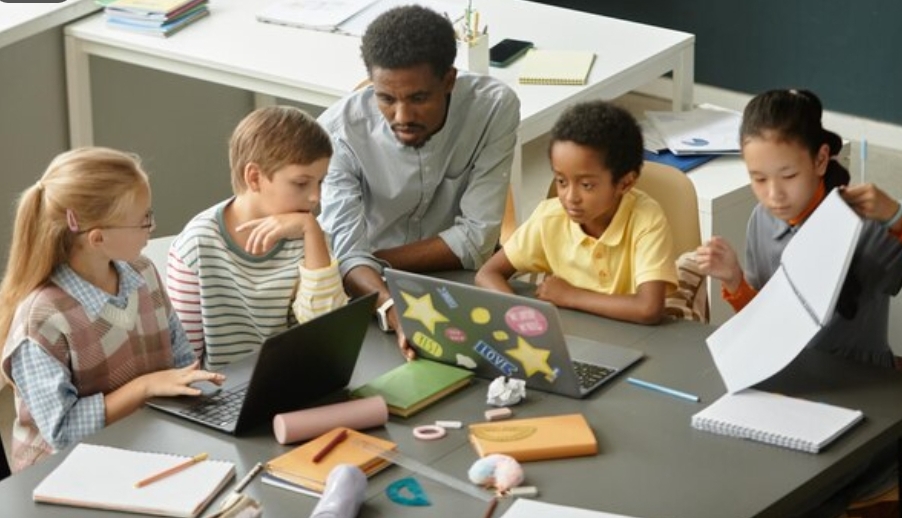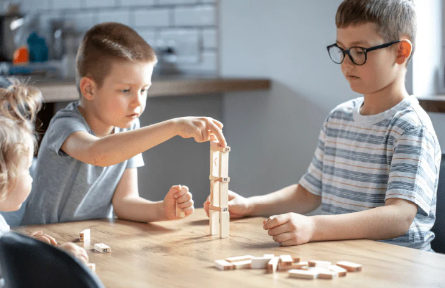The education landscape is undergoing a metamorphosis, with exciting innovations taking center stage. This case study delves into these advancements, exploring their potential to transform learning experiences and empower students to thrive in the 21st century.

Technology: A powerful driver of educational innovation, from virtual reality to adaptive learning platforms.
Gamification: The art of incorporating game-like elements into learning to boost engagement and motivation.
Personalized Learning: Tailoring instruction to individual needs and learning styles, maximizing student potential.
Critical Thinking: Equipping students with the ability to analyze information, solve problems, and make informed decisions.
Collaboration: Fostering teamwork and communication skills – essential for success in today’s interconnected world.
Now, let’s explore some groundbreaking innovations that are reshaping education:
- Immersive Learning with Virtual Reality (VR) and Augmented Reality (AR): Imagine transporting students to the heart of the Amazon rainforest or allowing them to dissect a virtual frog in biology class. VR and AR are revolutionizing education by creating engaging and interactive experiences that bring abstract concepts to life. These technologies can enhance critical thinking by allowing students to explore different environments and test hypotheses in a safe, virtual space.
- Gamification: Making Learning Fun and Rewarding: Gamification injects a dose of fun into the learning process. Imagine earning points for completing assignments, unlocking badges for mastering skills, or competing in educational online games. This approach boosts motivation and engagement, making learning feel less like a chore and more like an exciting adventure. Additionally, it fosters healthy competition and collaboration as students work together towards shared goals.
- Personalized Learning: Tailoring the Journey for Each Student: One-size-fits-all education is a thing of the past. Personalized learning platforms utilize technology to assess individual strengths, weaknesses, and learning styles. Based on this data, the platform curates personalized learning paths with adaptive content, targeted instructions, and activities that cater to each student’s unique needs. This approach empowers students to learn at their own pace and reach their full potential.
- Project-Based Learning: Empowering Students to Become Active Learners: Move over, textbooks! Project-based learning puts students in the driver’s seat, challenging them to tackle real-world problems. Imagine collaborating on a project to design a sustainable city or develop a campaign to raise awareness about a social issue. This approach fosters critical thinking, collaboration, and communication skills as students research, brainstorm solutions, and present their findings. Additionally, it allows students to develop a deeper understanding of the subject matter by applying their knowledge to real-world scenarios.
- Flipped Classrooms: Reimagining the Learning Space: Flipped classrooms revolutionize the traditional model of instruction. Imagine students watching video lectures at home and then using classroom time for interactive activities, discussions, and personalized instruction. This approach allows for deeper understanding during class time as students grapple with concepts already introduced. Additionally, it empowers teachers to provide targeted support and focus on areas where students need the most help.
Looking Forward: The Future of Education
These innovations are just a glimpse into the exciting future of education. As technology continues to evolve, we can expect even more transformative approaches to learning. The focus will shift towards developing critical thinking skills, collaboration, and adaptability – essential for success in a rapidly changing world. The classroom of the future will be a vibrant hub of personalized learning, where technology empowers students to become active participants in their educational journeys.
Join the Conversation!
What are your thoughts on these innovations? Share your experiences and ideas in the comments below. What innovations are you most excited about for the future of education? Together, let’s create a learning environment that fosters a love of knowledge, empowers students, and prepares them to thrive in the 21st century and beyond!










